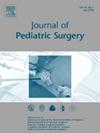Gastroesophageal Reflux and Gastrointestinal Symptoms After Metabolic and Bariatric Surgery in Adolescents: An 8-year Follow-up Analysis
IF 2.4
2区 医学
Q1 PEDIATRICS
引用次数: 0
Abstract
Importance
Vertical sleeve gastrectomy (VSG) and Roux-en-Y gastric bypass (RYGB) are the most commonly performed metabolic and bariatric surgery (MBS) procedures in adolescents and adults. Despite their safety and effectiveness, there is concern over postoperative gastrointestinal symptoms (GIS), especially gastroesophageal reflux symptoms (GERS), in those undergoing VSG.
Objective
To evaluate the long-term prevalence of GIS in adolescents who underwent RYGB or VSG.
Design, setting, and participants
This is a prospective, multicenter, observational cohort study at five academic referral centers in the United States. Patients were enrolled from February 28, 2007, through December 30, 2011. The analysis included 228 adolescents: 161 RYGB and 67 VSG followed prospectively for 8 years.
Main outcomes and measures
Patient-reported GIS before surgery and across 8 years of postoperative follow-up were assessed. We dichotomized postoperative symptom severity and analyzed the data using general linear mixed models.
Results
Adolescents undergoing either VSG or RYGB demonstrated significant increases in abdominal pain (10 % vs. 17 %), bloating (8 % vs. 20 %), and constipation (3 % vs. 9 %) between baseline and 8 years (p < 0.05). Following RYGB, the prevalence of GERS was not statistically significantly different between baseline (12 %) and 8 years (13 %) (p > 0.05). Following VSG, however, GERS increased from 9 % preoperatively to 27 % at 8 years (p < 0.05). In adjusted analyses, VSG was associated with higher odds of GERS at 8 years (adjusted odds ratio 2.67 [1.57–4.55, 95%CI]).
Conclusions and relevance
GERS represents a considerable concern pre- and post-MBS in adolescents, especially after VSG. Appropriate patient selection along with counseling and objective monitoring for pathologic consequences of gastroesophageal reflux after MBS are warranted.
Trial registration
Clinicaltrials. gov Identifier: NCT00474318.
Type of study
Prospective, multicenter, observational cohort.
Level of evidence
Level II.
求助全文
约1分钟内获得全文
求助全文
来源期刊
CiteScore
1.10
自引率
12.50%
发文量
569
审稿时长
38 days
期刊介绍:
The journal presents original contributions as well as a complete international abstracts section and other special departments to provide the most current source of information and references in pediatric surgery. The journal is based on the need to improve the surgical care of infants and children, not only through advances in physiology, pathology and surgical techniques, but also by attention to the unique emotional and physical needs of the young patient.

 求助内容:
求助内容: 应助结果提醒方式:
应助结果提醒方式:


